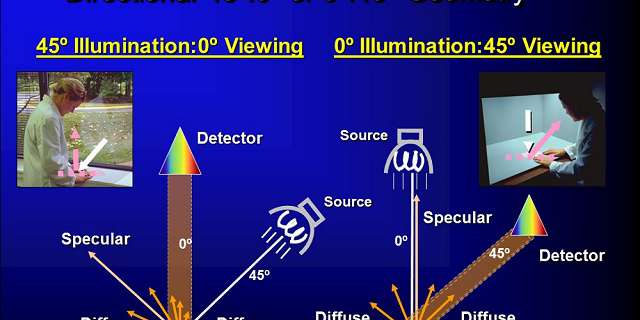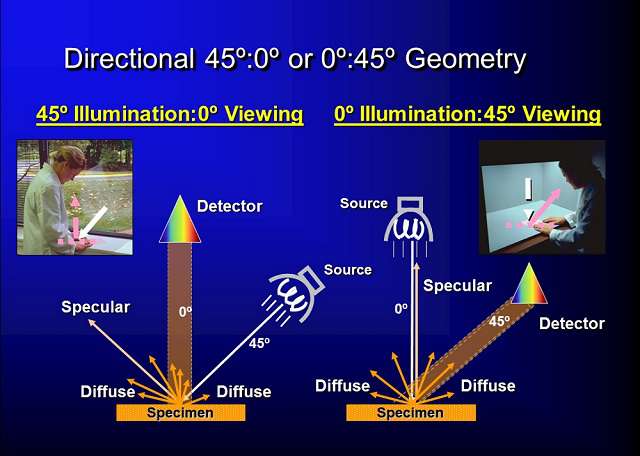
FAQ: “…. the schema of the principle of measuring shows other way of light (source of light -> sample -> sphere -> detector) than our Vista (source of light -> sphere -> sample -> detector). Please can you explain me difference between both construction? difference between both results of measuring?”
This describes the concept of equivalency of inverse geometries for color measuring instruments in reflectance where the source of light -> sphere -> sample -> detector in a CIE diffuse d:8 geometry is equivalent to the source of light -> sample -> sphere -> detector of an 8:d geometry. The same concept applies to CIE directional 45:0 and 0:45 geometries.

An instrument with directional 45:0 geometry on the left matches the viewing condition of the technician at the window, and is equivalent to the 0:45 geometry on the right matching the technician viewing samples in the light box.
When you look at a sample color, the color you perceive is dependent on the geometry of how you look at it – where source of white light is; where you are standing and where the sample is.
To measure a color as you perceive it, the instrument geometry must match the way you view the sample. A CIE instrument geometry is a formal definition of the relative positions of the light source, sample plane and detector to each other.
There are two main categories with 2 equivalent geometries each – diffuse d:8 (most common) and 8:d and directional 45:0 (most common) and 0:45.

